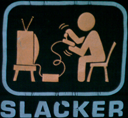Table of Contents
Introduction
Practical Uses
Limitations
The AI Approach
This is the flow for the AI system. First the system will receive and input from a sensor. This sensor can be any type of sensor where the data that is sent up the system chain will be a value between 0.0 and 1.0 . This value is a representation of the sensors threshold or just below or over the limits (buffer) of the sensor. If there is some buffer for the sensor value then this buffer will be considered highly undesirable to the AI system. The signal for the sensor will then travel up to the “Space Tree”. This space tree is the memory system for the AI. The space tree will consist of neural network nodes. These nodes will be linked together by the fact that they were created at the same time. Over time these links will decay unless a new sensor event occurs with the same information. If the sensors report the same information then the link will be fractionally strengthened. The space tree will conduct an analysis over the existing nodes and will try to create a higher level encapsulation in a new neural network containing the nodes that occurred at the same time. For example, the rods and cones on the retina will create individual nodes, but if the space tree keeps “seeing” the same four nodes fire at the same time then a new neural network will form containing those four nodes. This new node will contain a pencil for instance. The next piece of the AI system is desire. The desire system will drive the AI to act upon what it is experiencing. Desire is based on the sensor limits. Take for instance a touch sensor. This sensor has a positive desire in the 0.4 – 0.7 range. If the sensor reports a value in that range the desire system will see it and will try to stimulate the motor system to maintain the value. If it is a bad desire, using the touch sensor, the bad value is between 0.2 – 0.3. Then the desire system will activate and conduct the motor system to try and stop the bad input. This act will be a random yet controllable output to the motor system. This output will be stored in the space tree with a link to the highest level node for the undesirable input. The input provided by the motor output will also be stored. If the attempt is unsuccessful then the desire system will try another random motor output until it succeeds. If the input exists in the space tree then it will see if there exists a motor output and will try the one that closely succeeded. If the duration of the search is taking to long the desire system will take a random approach to change the input.

